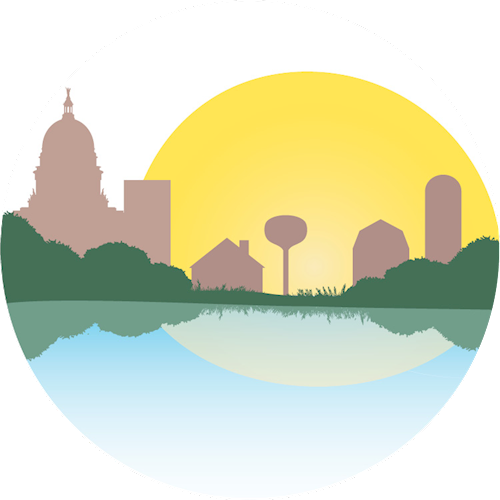
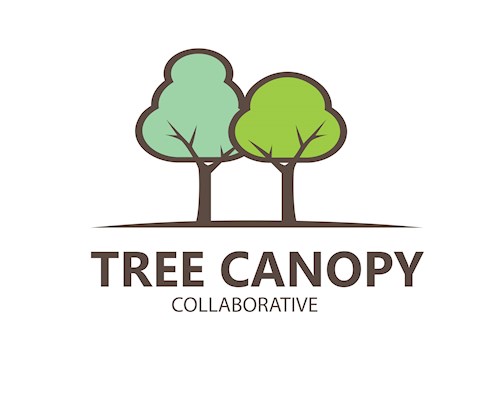
Access to trees is a human right. Everyone deserves the cool shade, clean air, better runoff management, and public health benefits that trees provide. Given the vital role trees play, growing the tree canopy across Dane County important, especially in a climate-changing world.
The aim of the Tree Canopy Collaborative is to collectively maintain, protect, and expand public and private tree canopy across Dane County where ecologically appropriate. Within this aim, a particular focus is on ensuring equitable access to trees and their associated benefits for all residents.
Partnership is fundamental to achieving success. The Collaborative is working collectively to co-develop goals with local experts in order to recognize neighborhood opportunities, needs, and constraints.
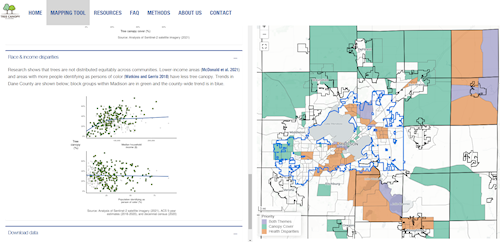
Growing Shade is an equitable tree cover prioritzation tool created by CARPC.This tool makes it easy for local planning staff members, neighborhood groups and residents to figure out where planting new trees will have the most impact. Users can explore this tool, which combines demographic, environmental, public health, and socioeconomic data to illustrate how tree canopy cover differs across Dane County and how it has changed over time.
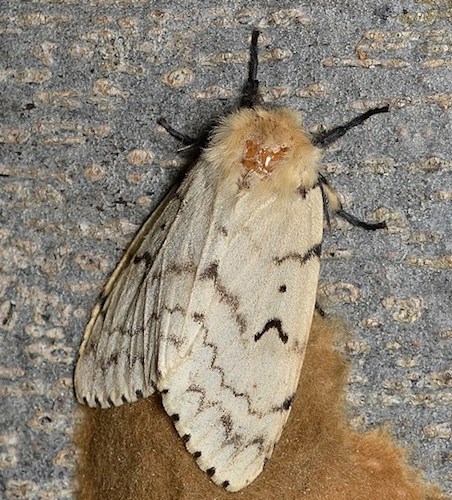
Dane County is currently experiencing a spongy moth outbreak. Learn more about how to identify this pest, protect your trees, and get involved in monitoring efforts to track the spread.
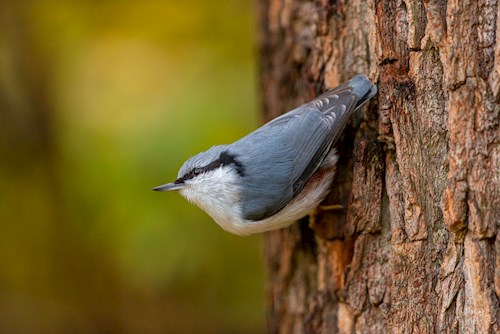
Trees provide flood protection, prevent erosion, and are a source of food and habitat to birds and small mammals while also providing opportunities for pollination.

Trees provide shade, reducing the heat island effect in paved areas, which can mitigate the effects of heat exhaustion. Trees also improve local air quality and reduce air pollution, which directly impacts respiratory health. Trees also boost the mental health of residents by providing mental respite in a developed environment
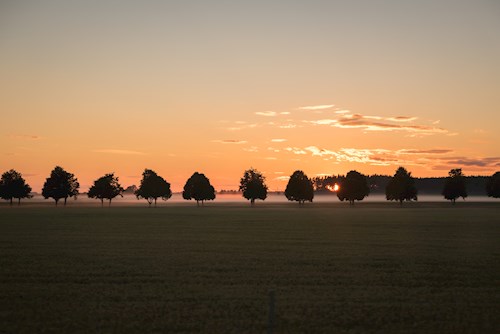
Trees protect people and property from the risks of climate change, such as by reducing impacts of floods and increased heat. Trees combat climate change by capturing greenhouse gases. By removing carbon dioxide and sequestering it in their trunks and roots, trees reduce the effects of carbon emissions across the county.
On average, villages and towns across Dane County have lost about 12% of their canopy coverage from 2010 to 2017, with decreases up to 38%. This loss is primarily due to disease, but lack of maintenance and ongoing development policies also likely play a role.
Dane County towns and villages with canopy decreases of 30% or higher include Village of Brooklyn, Village of Belleville, Town of Primrose, City of Stoughton, City of Monona. Towns and villages within Dane County with the greatest total acres of canopy lost include the City of Madison, Town of Primrose, Town of Perry, and Town of Vermont. Land use across the county that tended to have the largest percentage decrease of canopy coverage were multi-family housing, single-family or two-family residential housing, and recreational spaces.

Vilas neighborhood in the City of Madison is one example of a historically well-canopied neighborhood that experienced an over 30% decline between 2010-2017.
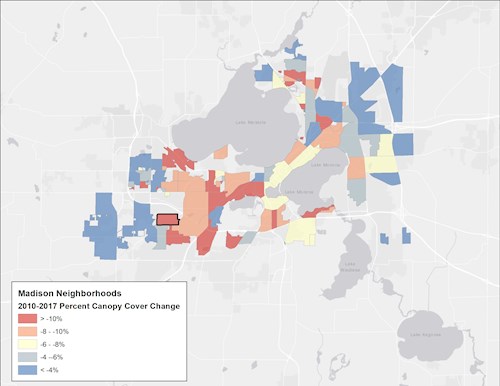
Greentree in the City of Madison also has experienced a high decrease in canopy from 2010-2017, while also having a high social vulnerability score.
Krempely & Cerveny 2021 investigated the relationship between tree canopy and racial, economic, and educational factors in Madison, Wisconsin. The results demonstrate that in race, income, and education do correlate to tree canopy variances in Madison: